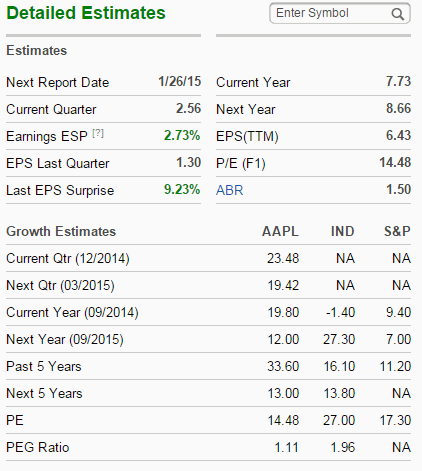Computerized Investing
Post on: 3 Октябрь, 2015 No Comment

by Joe Lan, CFA
No matter what type of investor you are, keeping an eye on your investments is always a priority. Thankfully, websites devoted to this task are continually offering more powerful portfolio management tools to help you do just that.
This Comparison article examines the top online portfolio tracking websites for individual investors. The focus here is on everyday investors and not on power traders or institutional investors, so top sites in this category should have a good balance of power and functionality, along with a reasonable price tag. In addition, expect these websites to be user-friendly. The three sites designated as the best in this years comparison are SmartMoney.com, Morningstar.com and Wikinvest.
Although online portfolio trackers are constantly adding new features and functionality, they still pale in comparison to software-based portfolio trackers. The majority of online portfolio trackers can only handle cash, stocks, mutual funds and exchange-traded funds ETFs ; they are limited in their customization; and they offer fewer portfolio analysis features. Reports offered are generally less robust than those found in software programs, as well.
The main upside for online portfolio trackers is that they are typically less expensive and, for the most part, easier to learn and use. In addition, online services provide the added convenience of being able to monitor your portfolio using smartphones and tablets. There is no software package to install and update, and users do not usually need to worry about platform compatibility.
With the majority of individual investors using online brokerages, the merits of using a separate site to track investments may seem redundant. Many online discount brokers offer proprietary portfolio management capabilities that are very good. However, most investors now have holdings in several accounts at different financial institutions: For instance, you may have a 401(k) account in one place, an IRA account in another and also an account at a discount broker. A third-party online portfolio management service solves the problem of tracking separate accounts by allowing users to combine and analyze all assets in one location, making it easy to monitor all holdings as one complete portfolio.
Most of the top websites that offer portfolio monitoring capabilities are part of larger comprehensive investment websites. As such, the portfolio trackers often provide links to news items and are able to provide emails that alert you to price, volume and news triggers. Furthermore, if you are paying for a premium portfolio tracker, the membership often comes with all the premium products offered at the website, such as advanced screening tools and robust fundamental data.
Features to Look For
When you are deciding on a portfolio manager, there are certain crucial features to look for. The top portfolio trackers here are all similar in functionality. When creating our top list, the characteristics most heavily considered were:
- Number of portfolios that can be tracked,
- Number of securities that can be handled in each portfolio,
- The types of securities handled,
- Frequency of price updates,
- Availability of analysis tools,
- Simplicity of use,
- Availability of email alerts, and
- Links to additional news sources.
Although this list does not represent everything individual investors look for in a portfolio tracker, it covers the most important aspects to weigh when considering your options.
Number of Portfolios
The top websites each offer a different number of portfolios that can be stored. For most investors, the differences will not be an issue, since users can store 25 separate portfolios at a minimum. If you have more than 25 separate portfolios, you may want to consider consolidating.

Another area to take into account is the maximum number of holdings each portfolio can track. Once again, this should not be an issue for the most part. However, it is worth noting that there is a definite possibility that users might reach the maximum allowed by SmartMoney.com, which is 50 securities per portfolio. Investors run almost no risk of reaching the maximum number of holdings per portfolio when using Morningstar.com or Wikinvest.
Securities Handled
One of the key differences between online portfolio trackers and the more robust software-based portfolio programs is the types of securities handled. Online services mainly track cash, stocks, mutual funds and exchange-traded funds. Data on these types of investment holdings are readily available on most investment websites.
Morningstar.com allows you to manually enter bond holdings and SmartMoney.com offers tracking of options. However, investors with significant holdings in bonds, options, futures or real estate may need to look elsewhere. If you are interested in more powerful, software-based portfolio managers, be sure to see our comparison in the Fourth Quarter 2011 issue of Computerized Investing (available at www.computerizedinvesting.com).
All of the top online portfolio trackers can handle stocks, mutual funds and exchange-traded funds.
Frequency of Updates
Online portfolio trackers originally required users to manually refresh the page to update pricing and market values for holdings. This is not the case anymore, as the top online portfolio managers reviewed here all update dynamic information, such as pricing, automatically when new data is available. In addition, the pricing data are all provided in or near real-time.
However, data updates are not frequent enough for investors who are performing trading functions.
Additional Analysis Tools
The availability of additional portfolio analysis tools is usually one of the top priorities of investors looking for a portfolio manager. The ability to generate quick breakdowns of your portfolio in terms of sectors, asset classes and industry is crucial when attempting to maintain a diverse portfolio. Being able to compare your portfolios asset class, sector and industry weightings against that of an index is an added bonus.
In addition, each of the three top online portfolio trackers offers company analysis and fundamental data. Morningstar.com and SmartMoney.com were both highlighted in AAIIs comparison of top comprehensive websites (August 2012 CI Online Exclusive; available in the Comparison archives online), so both offer a bevy of other features, such as stock and fund screening. Morningstar.com provides propriety company analysis for premium members. SmartMoney.com offers a variety of java-based tools. Wikinvest provides company pages that can be edited by registered users and allows members to post articles on perceived investment trends.
Simplicity of Use
Another key consideration for investors is the relative ease-of-use of an online portfolio tracker. Users with basic computer knowledge should have no problem using any of the three top online portfolio trackers.
Wikinvests extra option of automatically syncing with your brokerage accounts makes it the easiest to use, especially when initially setting up your portfolio. Morningstar.com offers videos to help you get started, along with an extensive frequently-asked-questions FAQs page.
Email Alerts and News
The beauty (and potential annoyance) of living in the information age is that you can be constantly connected to the Internet, which enables you to receive continual updates. Each of the three top online portfolio managers offers email alerts that can be sent based on a variety of triggers.
With so much news available at your fingertips, news items have become a big driver of short-term stock price movement. As two of the top comprehensive investment websites, Morningstar.com and SmartMoney.com provide outstanding news from outside sources. These news stories can be shown directly on the website portfolio pages. In addition, they are prominently linked in company summaries.
The Top Trackers
This comparison focuses on our top picks among the online portfolio management websites. This year, the top online portfolio trackers remain the same as our last Comparison in 2010Morningstar.com, SmartMoney.com and Wikinvest. Depending on your investment websites of choice, the best portfolio tracker for you may simply be the one on the website you already typically frequent.
As part of our due diligence, I took a close look at the portfolio trackers at Google Finance and MarketWatch.com. After familiarizing myself with the new features available at each site, I decided not to add either to our top list. Google Finance offers very limited additional analysis tools and does not provide the features that we have come to expect from the best online portfolio trackers. MarketWatch.com, on the other hand, does offer good analysis tools, but creating portfolios on the site was not intuitive. In addition, MarketWatch.com does not offer a comprehensive help section.














